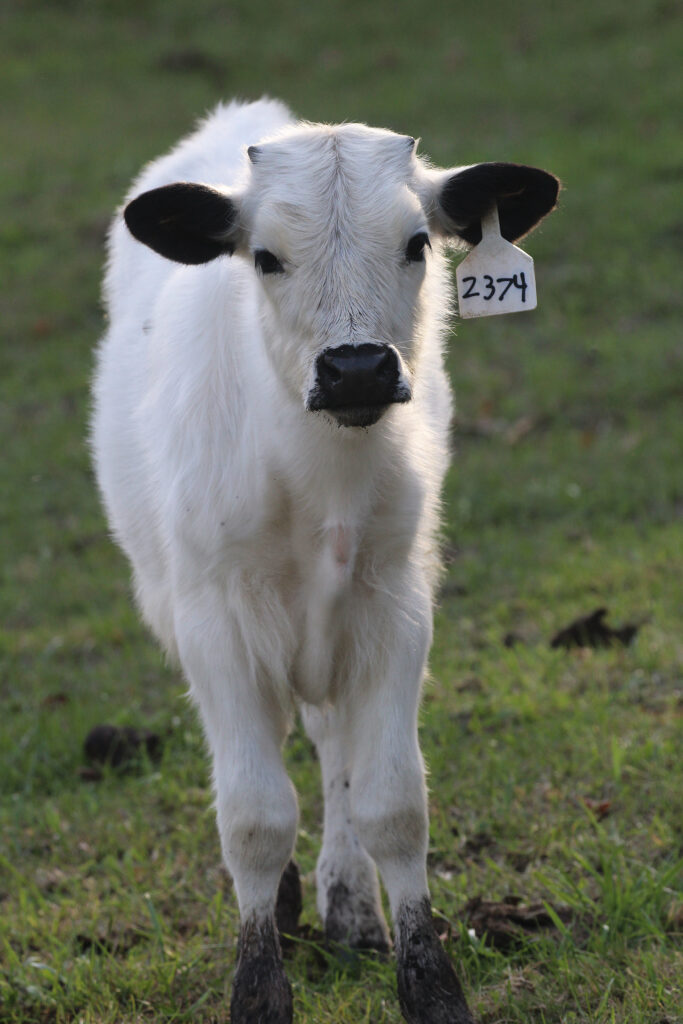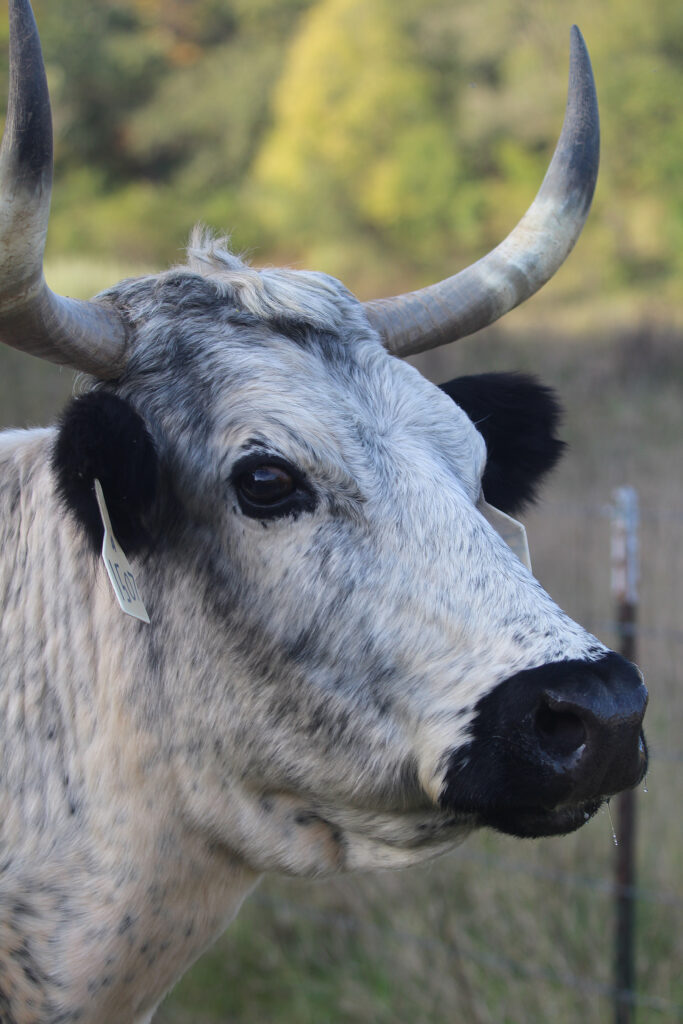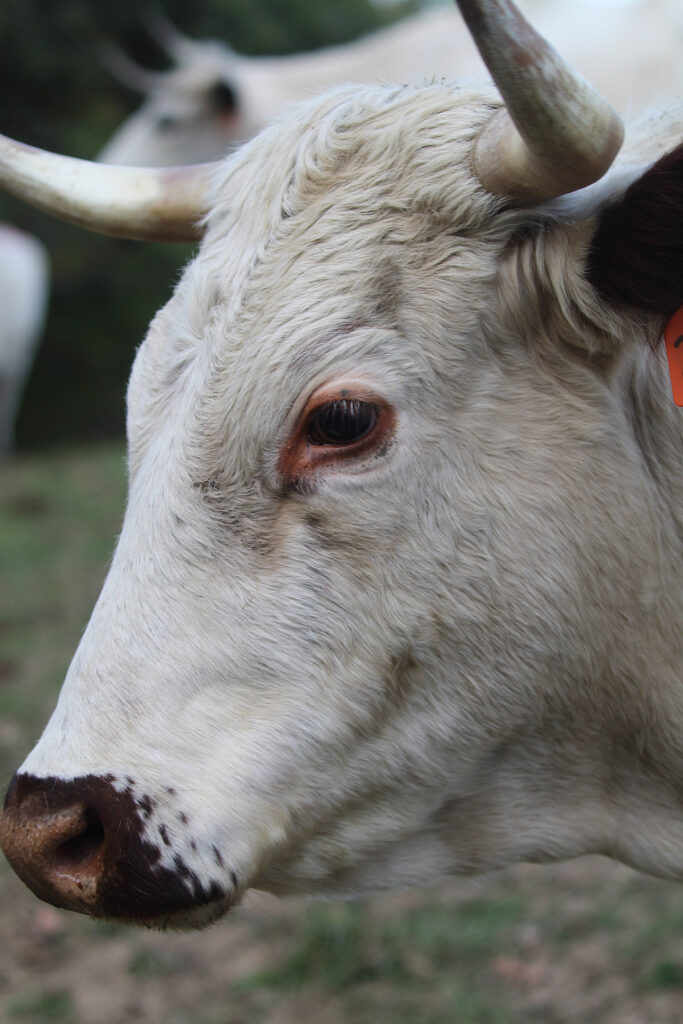Meet the Ancient White Park Cattle of Heritage Farm
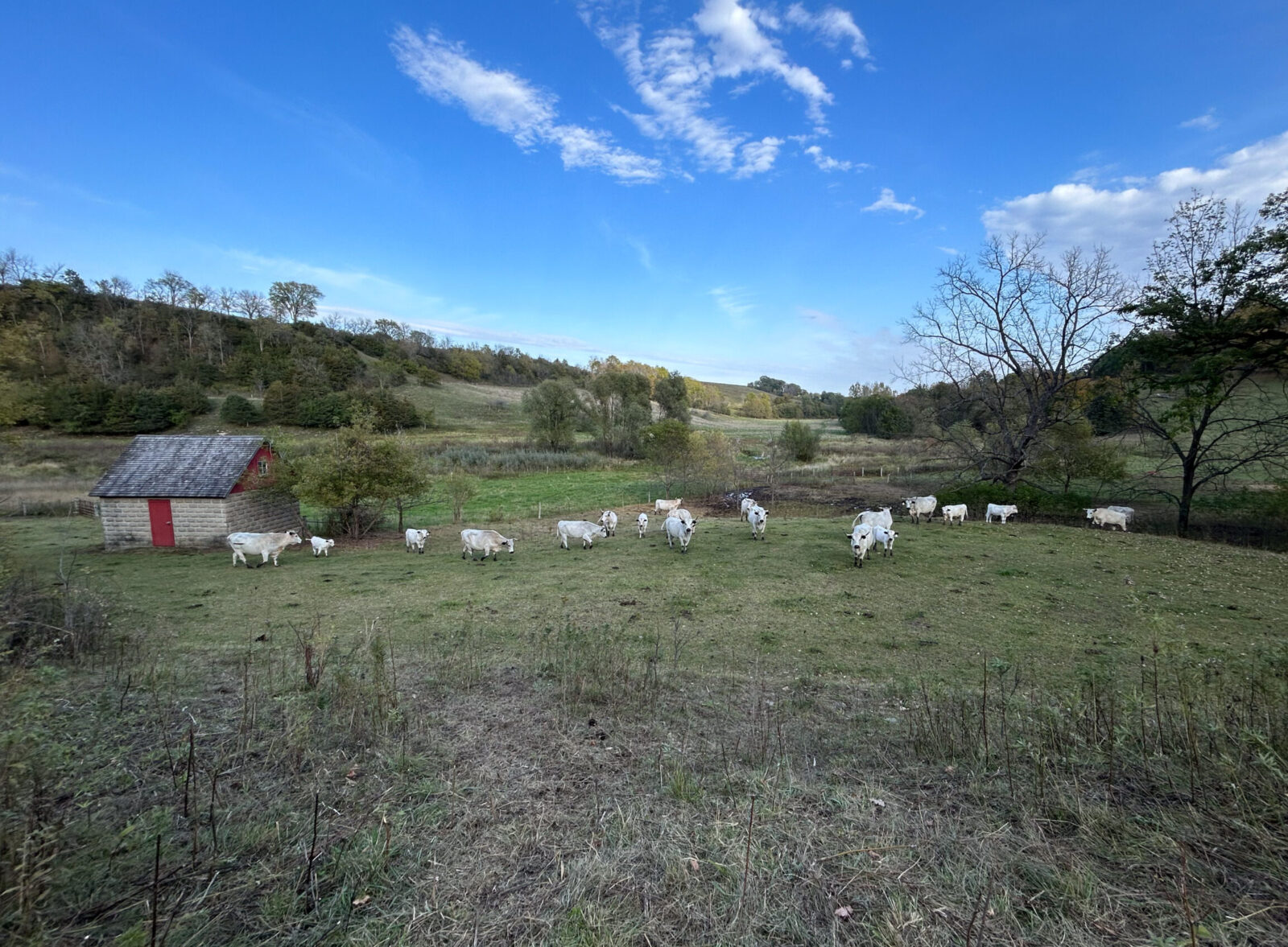
Wait a second, you thought Seed Savers Exchange only stewarded seeds? Think again!
Heritage Farm is home to two herds of Ancient White Park cattle, cared for by Seed Savers Exchange. These heritage cows are part of an ongoing conservation effort, but they also work hard to maintain Heritage Farm by
- grazing fields and trails
- clearing weeds
- providing manure for fertilization to improve soil health
Increasing the numbers and conserving the genetic diversity of the Ancient White Park cattle breed is an important part of Seed Savers Exchange’s mission.
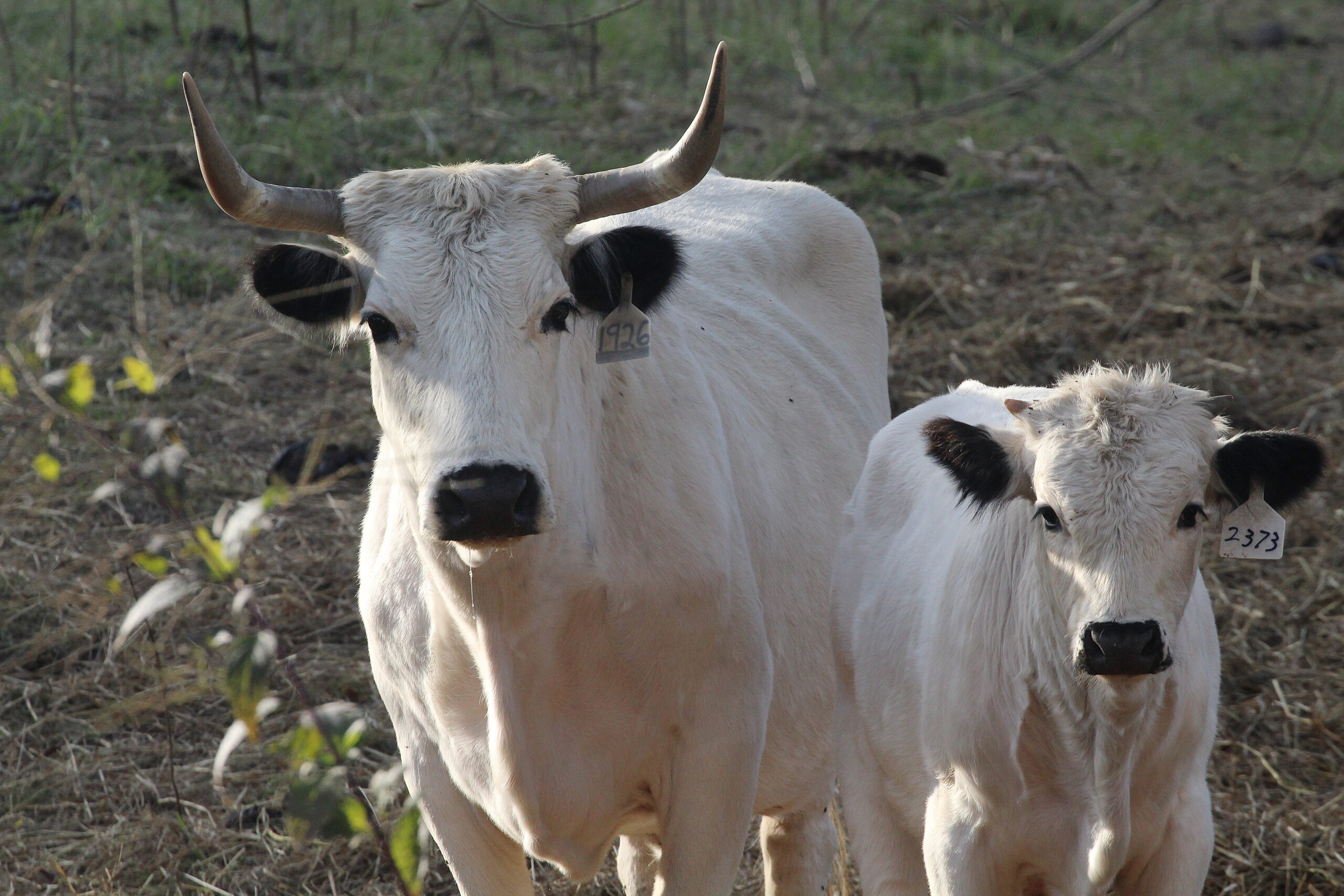
History
The ancestors of our Ancient White Park cattle have roamed the British Isles for centuries. Invading Romans recorded the cattle in 39 CE, but Druids and Celts mentioned the cattle in their early epics long before the Romans invaded. Descriptions of their white color and unique features crop up periodically in historical documents.
The island-based origin of this breed isolated the cattle from other breeds, preserving its genetic diversity and value. Apart from the British Isles isolating the Ancient White Park cattle from other breeds, limited human activity over the centuries has also played a part in the breed’s evolution. Druids bred the cattle for ceremonial purposes, and in the centuries that followed the herds were only used for trophy hunting.
Since humans historically did not use this cattle breed for agricultural purposes, the herds maintained their isolation from other breeds. According to blood typing, a remarkable genetic difference exists between the Ancient White Park cattle and all other domesticated cattle breeds.
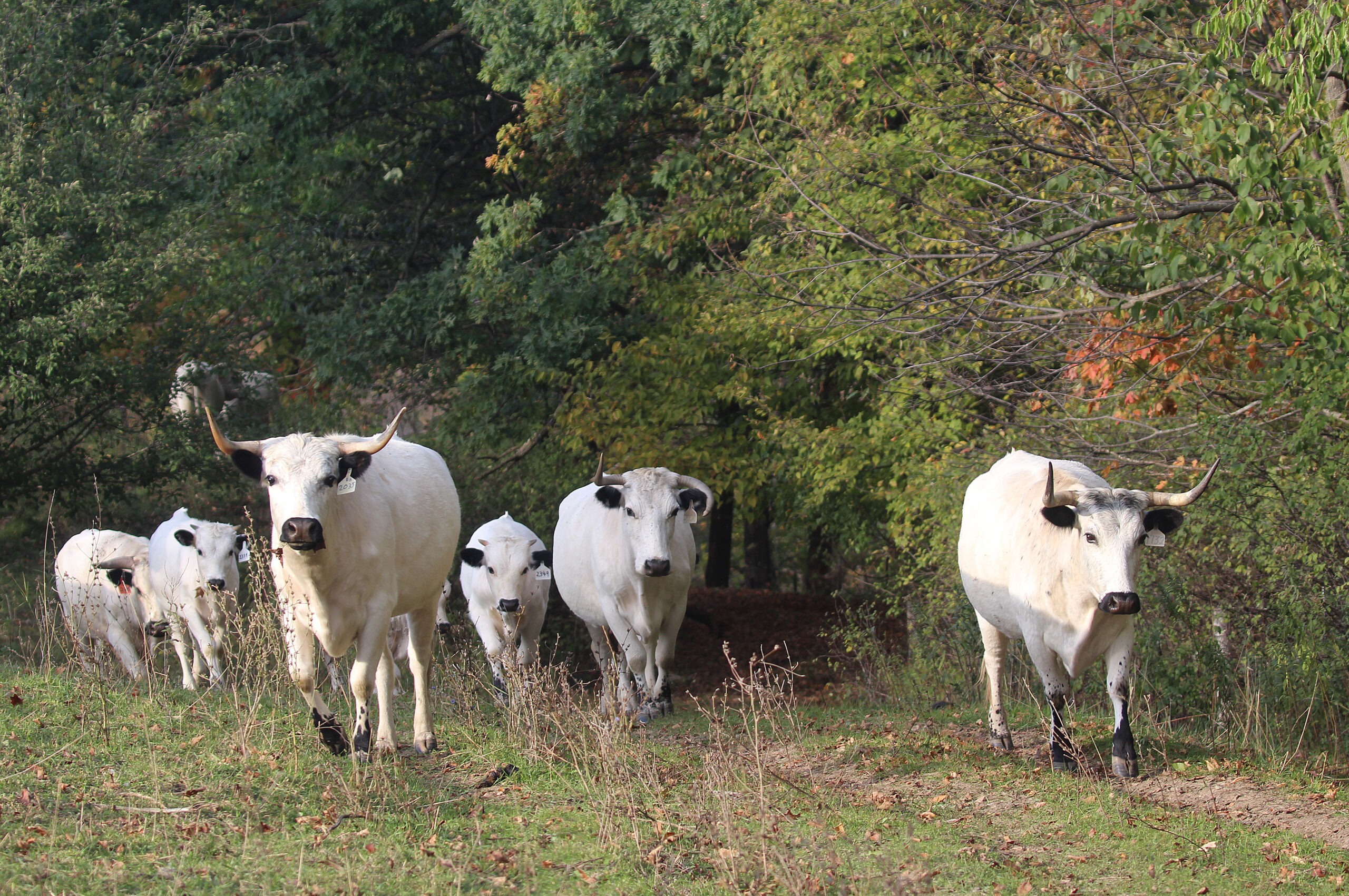
In 1225, King Henry III passed legislation to enclose several existing “deer parks” which included herds of Ancient White Park cattle. Most herds continued to roam the British Isles freely. However, as their habitat gradually reduced, the cattle outside of these parks disappeared, leaving only the “park” cattle.
But how did Ancient White Park cattle get to Seed Savers Exchange? Well, it’s kind of a complicated story.
Seed Savers Exchange Stewardship
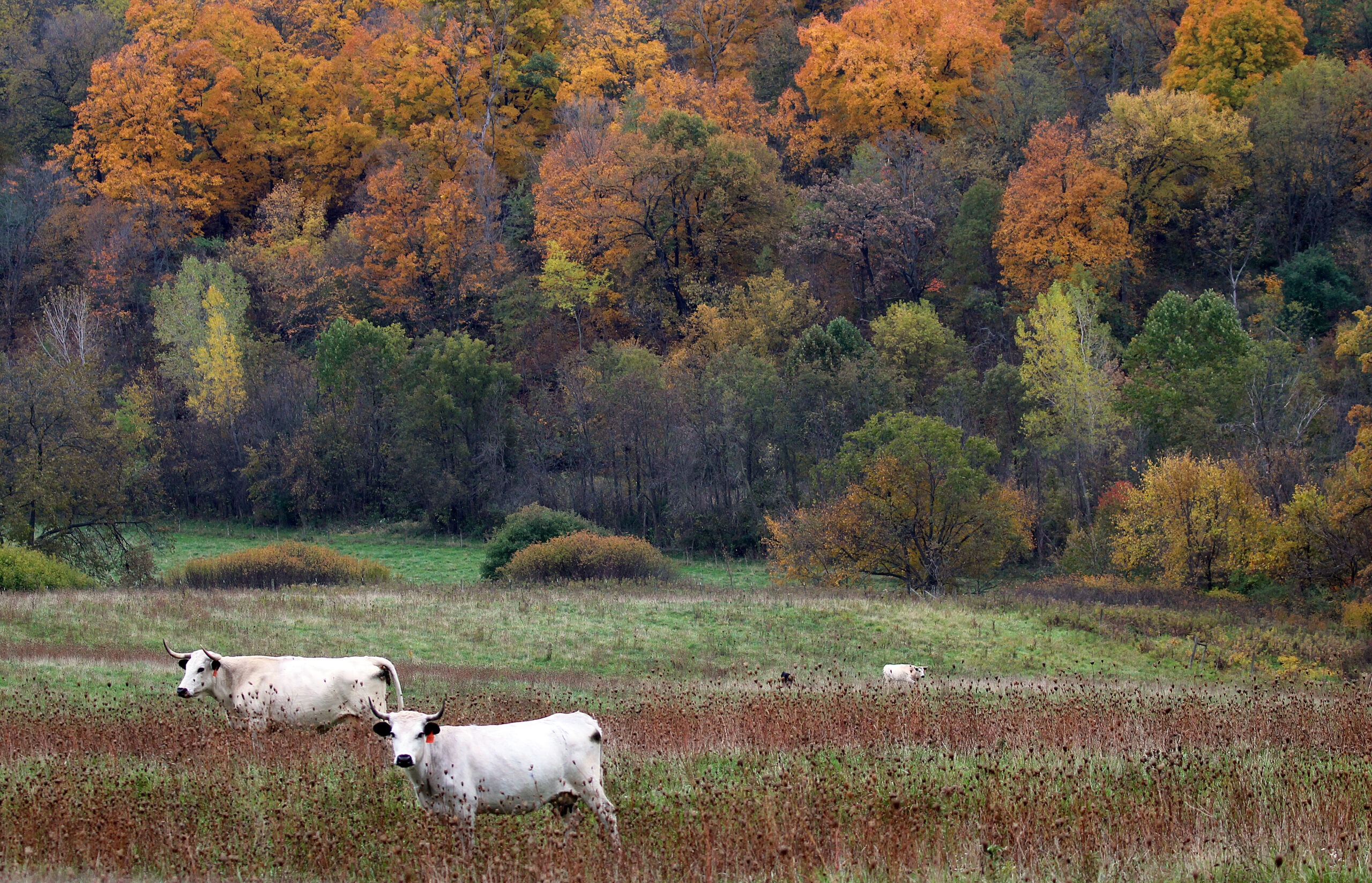
Ancient White Park cattle came to North America from the United Kingdom during World War II to protect the breed from the German invasion. The shipment, which included five cows and one bull, was sent first to the Toronto Zoo, then moved to the Bronx Zoo. Due to space restrictions, the small herd was relocated to the King Ranch in Texas until the 1980s. From there, the herd relocated to Polk City, Iowa, and then was dispersed to several conservators in the United States and Canada—including Seed Savers Exchange’s Heritage Farm in 1988.
When Ancient White Park cattle came to Heritage Farm, the breed was “critically endangered.” In 2012, the Livestock Conservancy upgraded the breed’s status from ‘“critical” to “threatened.” Although this improvement is impactful, Ancient White Park cattle remain endangered. “Threatened” species number fewer than 5,000 globally, with fewer than 1,000 annual registrants in the United States.
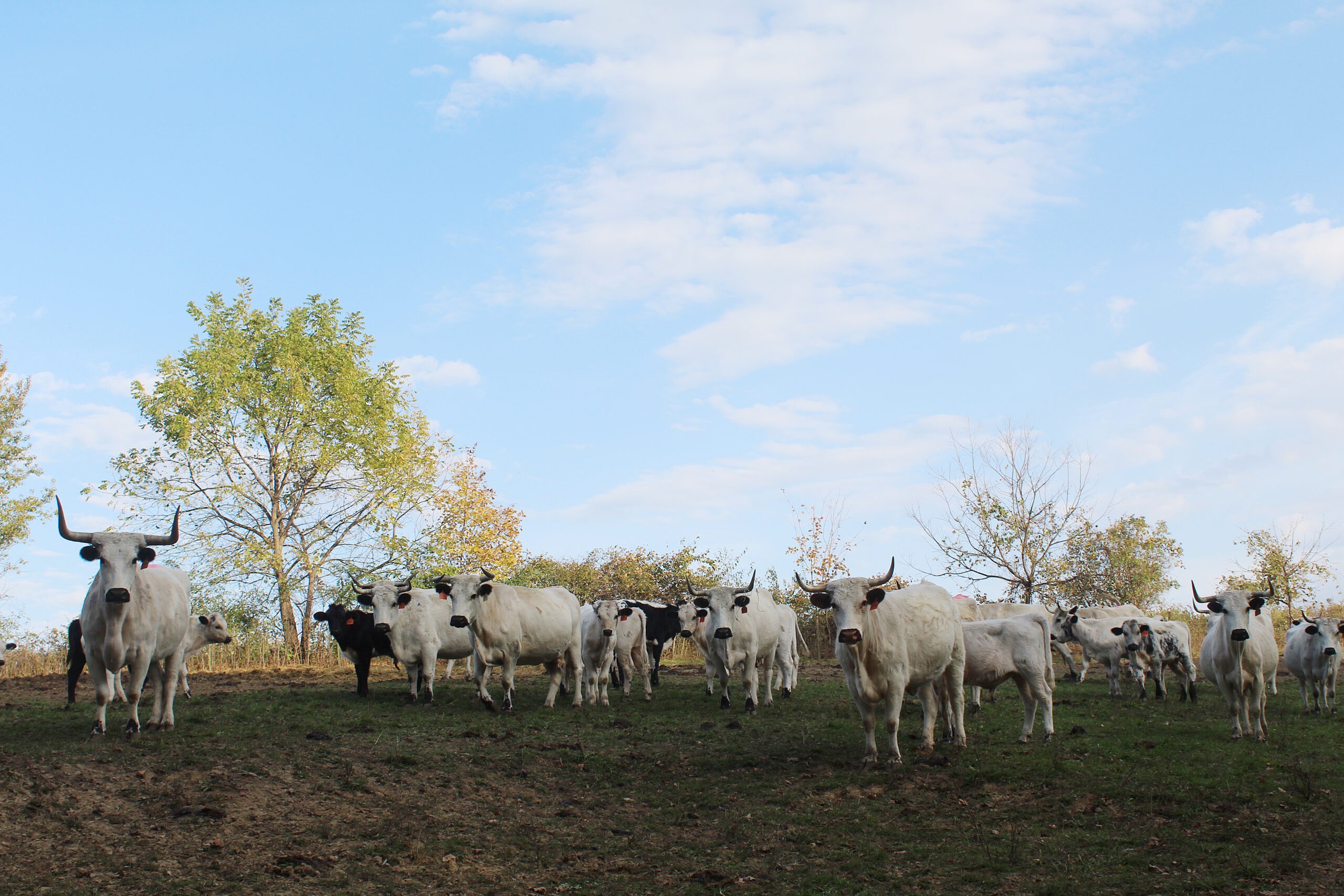
The farm currently has over 80 animals across two herds: A herd and B herd. The cattle are separated into two herds to maintain genetic diversity and to better document lineage and desirable traits. Rather than breeding Ancient White Park cattle to produce larger, more profitable animals, Seed Savers Exchange’s goal, in line with its mission, is to increase population and preserve the breed’s specific traits.
Ancient White Park Cattle Traits
Ancient White Park cattle have particular physical and behavioral traits that define the breed. The cattle are athletic and lean in appearance, but the cows can range in size from 1,000-1,200 pounds when mature, with bulls reaching between 1,500-1,800 pounds. The cattle have black-tipped horns which twist in a lyre shape on cows. Bulls can develop widely curved U-shaped horns. The breed is best known for its distinctive white coat with colored “points” on the cattles’ ears, eye rims, muzzles, and hooves.
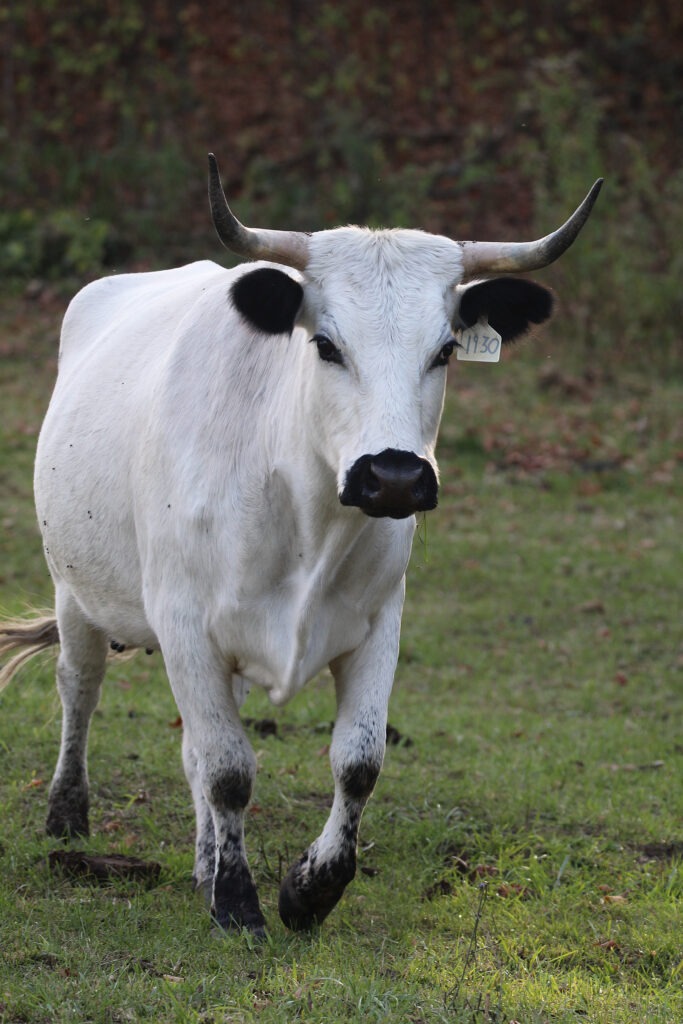
These points are usually black in color, but some animals’ points have a reddish coloring. Cattle are often pure white and have dark skin, with the possibility of black or blue speckles scattered across their fur. Some cattle are born with a recessive black-coat trait.
Ancient White Park cattle are hardy and adaptive. They are fertile and excellent grazers. The cattle at Heritage Farm are docile, but can become aggressive in temperament, especially to protect young calves.
Learn More
To learn more about this amazing, ancient breed visit the Livestock Conservancy’s website or B Bar Ranch’s website. For a more detailed history, read this 2010 newsletter from the Livestock Conservancy.
Seed Savers Exchange, located just outside of Decorah, Iowa, is open to visitors. At Heritage Farm, visitors can take a tour of the grounds to see these beautiful animals up close. Or, check out these videos to see the cattle in action!
This article updates a piece previously published on the Seed Savers Exchange blog in 2014.
